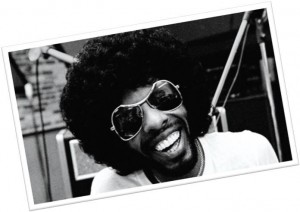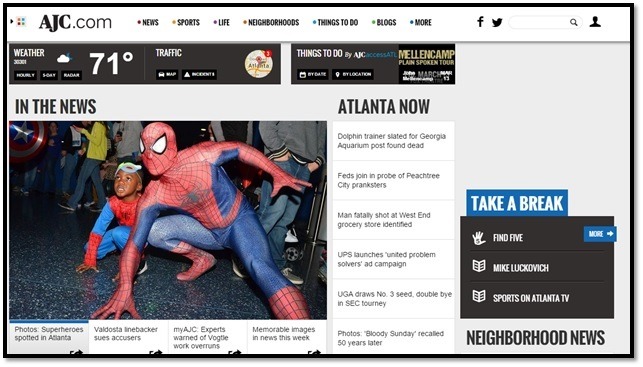 A one-size-fits-all strategy in a media world of customized choices and expanded options just isn’t viable anymore. And media captains and content creators are learning those lessons on the digital highway. As the great philosopher Sly Stone once noted, “Different strokes for different folks.”
A one-size-fits-all strategy in a media world of customized choices and expanded options just isn’t viable anymore. And media captains and content creators are learning those lessons on the digital highway. As the great philosopher Sly Stone once noted, “Different strokes for different folks.”
Every generation is different. And that’s a fact that marketers continue to struggle with, especially when it comes to Millennials. This group has now surpassed Baby Boomers in sheer size – a fact that compels brands with an eye on Generation Y to better understand the underpinnings of attitudes, opinions, perceptions, and lifestyles.
In much the same way that Boomers and Xers were misunderstood by marketers – as well as their parents – today’s Millennials are up against many of the same challenges their elders faced. And they’re doing that in an economic environment that has been difficult at best for the better part of the last decade.
But rather than demonize them, it is essential to understand them. Our first real foray into this youth market occurred back in 2007 when we partnered with Arbitron on “The Bedroom Project.” At the time, social media and smartphones were just emerging as game-changing technologies. At that time, Arbitron was especially interested in what made these twentysomethings tick, not only in the media they consumed, but also their attitudes and opinions toward participating in ratings surveys.
Fast-forward eight years and marketers continue to try to get their strategic heads around this important generation, whether it’s the automakers trying to understand attitudes and car ownership, or beer companies capitalizing on the craft beer phenomenon and its disruptive impact on mainstay beers like Budweiser and Miller.
Media outlets face these same challenges. And as we’ve started poring over the early returns in Techsurvey11, we see some of the same patterns that have played out these past few years. Millennials have different attitudes – toward brands like Facebook, YouTube, Netflix, and of course, radio. We’ll be doing some serious “data restructuring” this year with our partners NuVoodoo in order to better understand the impact of Gen Y on radio brands.
And radio isn’t the only legacy medium investigating these generational differences. It turns out the Cox Media Group is focused on refining and redefining newspaper readership – especially the online audience – to better serve and satisfy Millennials. They’ve made it a priority, and to radio broadcasters, it should serve as a suggestion this generation is truly the future. Using tried and true methods from the past isn’t going to work to satisfy or attract them.
A recent article in NetNewsCheck breaks it down with the help of the Atlanta Journal Constitution and CMG SVP of audience strategy, Mark Medici. At a recent conference, he talked about the need for different strategies to serve different generational needs. That is, a one-size-fits-all concept cannot expect to satisfy traditional Boomer news readers on the one hand, and emerging Millennials on the other.
Medici admitted that the news writing, gathering, and story selection concepts for the AJC’s free site are quite different in style and approach than the traditional paid site. Admitting that the free site attracts that coveted 24-34 year-old group with a product that’s “not necessarily capital ‘J’ journalism,” social media plays a major role in attracting these younger consumers.
And of course, usage metrics and analytics make it increasingly easier to understand the content and approach differences necessary in attracting younger listeners. As we always say in radio, the 25-54 demographic never made much sense because a 26 year-old venturing out into the job market has very little in common with a 53 year-old contemplating retirement strategies.
So the AJC site actively seeks out data to help better understand the keys to developing more targeted content. As Medici noted, “Personally, I’ve never seen research start to be in greater alignment and actionable than today.”
The result is a free site that should reach the goal of 45 million “sideways referrals,” as Medici called them, next year. Notice that he’s not talking about old school metrics like circulation.
That should be a strong sign that it’s possible for even the oldest of legacy media – print – to recalibrate its products, its services, it’s analytics, and its approaches to not only stay in the game – but play it on an even higher level.
For radio, it provides hope that digital assets in the form of podcasts and on-demand radio, social media, mobile, video, customized channels, and other tools can be strategically used to not only attract Millennials, but also to study and better understand them by using the richer metrics available with new platforms. As Medici has learned more about readership habits and tastes by truly studying behavior, radio must go beyond its traditional ratings metrics to get the industry’s head around what truly moves the needle with Gen Y – and ultimately with older consumers whose entertainment and information habits are undergoing change, too.
It’s where media meets data, and it illustrates that when it comes to understanding and appealing to this generation, a different mindset and approach is needed.
Different strokes.
- Can Radio Afford To Miss The Short Videos Boat? - April 22, 2025
- Media And Technology In 2025: Believe It Or Not! - April 18, 2025
- In Radio, You Just Never Know - April 17, 2025






Leave a Reply